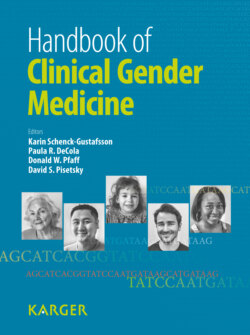Читать книгу Handbook of Clinical Gender Medicine - Группа авторов - Страница 51
На сайте Литреса книга снята с продажи.
Intrauterine Environment and IQ
ОглавлениеThe long standing and sometimes fierce ‘nature-versus-nurture’ controversy has often focused on the heritability of IQ, a fertile ground for infamous racist theories and ideologies. In order to arrive at meaningful and scientifically sound results, studies cannot be based on genetics only but need to take into account the different environments in which a human being and his/her IQ develop. Home, social groups, and educational frameworks are such environments, but so is the uterus. Devlin et al. [22] published a meta-analysis of 212 IQ studies which included over 50,000 twins. They reported that IQ is positively related to birth weight, normalized for gestational age, indicating that maternal nutrition may affect the IQ of the child. Moreover, they summarized literature reports indicating that IQ may also be increased by certain dietary supplements used by pregnant women and lowered by consumption of alcohol, drugs, and tobacco during pregnancy. Thus, the intrauterine environment affects the IQ in addition to the postnatal environment. The authors estimated, based on their studies, that the total effect of genes on IQ is less than 50%. Moreover, the fetal environment alone accounts for 20% of the covariance between twins and 5% between siblings born from the same mother at different times. The fluidity of the relative impact of the environment and genetics on IQ levels has been emphasized by Turkheimer et al. [23] who showed in close to 60,000 children that the relative contribution of the environment and genetics to future IQ levels is closely related to the socioeconomic status of the family. The lower the status, the higher the impact of the environment, and vice versa. According to this body of data it seems that in the low socioeconomic bracket virtually all of the variance of IQ is related to the pre-and postnatal environment while in the highest socioeconomic environment most of the IQ can be attributed to genetics.
